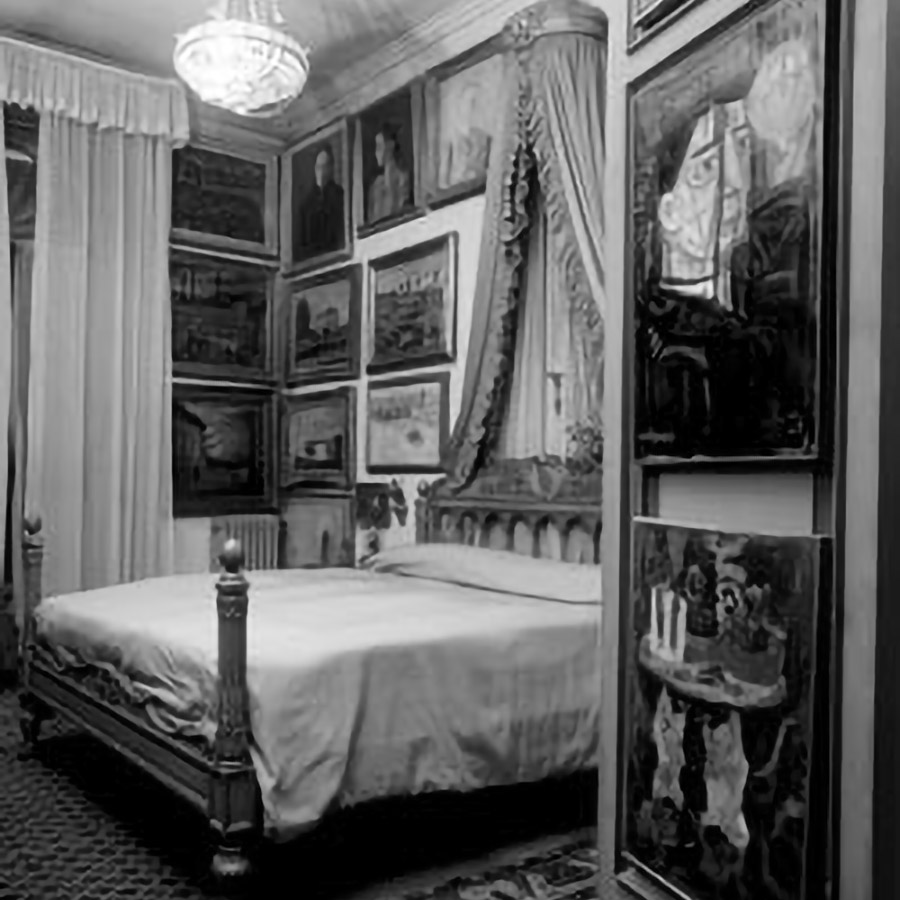Gli arredi della Casa-Museo
Quaderno 2
Marieda Di Stefano and Antonio Boschi’s passion for the art of their time, the attention with which they followed its evolution and participated in the vicissitudes of its protagonists, constantly influenced the ways and environments of their lives. So as to make the flat in via Jan 15 an extraordinary ‘inhabited museum’, a place where the needs of the collection seem to have had the upper hand even over domestic functions and where the spaces, the layout, the furnishings are almost ‘subjugated’ to the reasons of art. When, after Antonio Boschi’s death, the house came to the City of Milan, complete with the art collections, but lacking most of the original furniture and furnishings, the gaps in the furnishings did not therefore seem an irreparable loss, or at least such as to distort the intentions of the future House-Museum.
Having relocated paintings and sculptures according to more functional exhibition criteria, and recovered some of the few remaining pieces of furniture, it was however necessary to proceed with a “set-up” capable of conveying the idea of domesticity, of constantly reminding the visitor of being in a home and not in an art gallery, trying to suggest that web of “affective” correspondences that had linked the Boschi couple’s living quarters to their paintings, sculptures and art ceramics.
The Boschi Di Stefano Foundation therefore decided to purchase a series of furnishings that would give the rooms the atmosphere of ‘living rooms’ in keeping with a very special art museum: located on the second floor of a normal apartment building and accessed by crossing a normal entrance threshold. This atmosphere has been ‘reconstituted’ through furnishings chosen congruently with the era of the building, which was constructed by the Radici Di Stefano company between 1929 and 1931 with the artistic advice of architect Piero Portaluppi (1888-1967). His ‘hand’ is evident in the exteriors with the unusual treatment of the diagonal graft of volumes, but it is also revealed in the interiors, in the finishes of the flats and in the décor of the entrance hall, staircase and landings.
In the mosaic floors, the wrought-iron railings, the design of the lamps, the highlighted corners and edges, the mixtilinear profiles and the broken lines that characterised Portaluppi’s expressive vocabulary in these decades predominate. With few exceptions all the new furnishings in the House-Museum date back to the period between the two wars and include lamps and furniture that are intended to harmonise both with the ‘past’ of the house and with its current exhibition requirements. Following the visit itinerary, we therefore propose a brief guide to the furnishings.
Ornella Selvafolta


